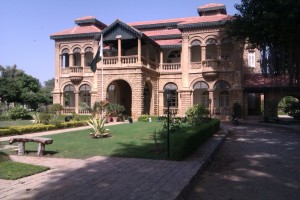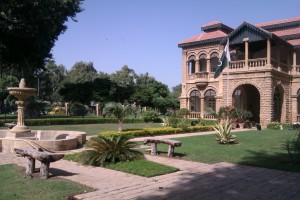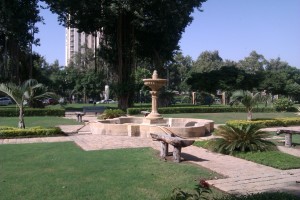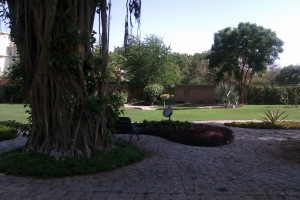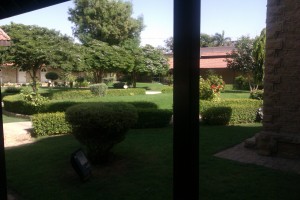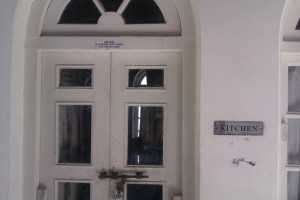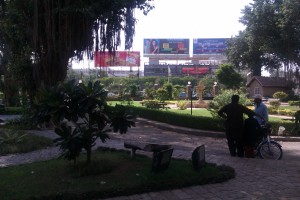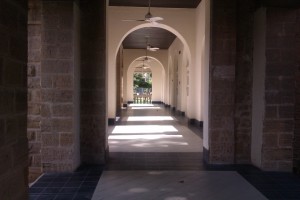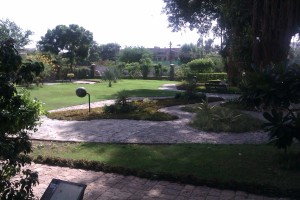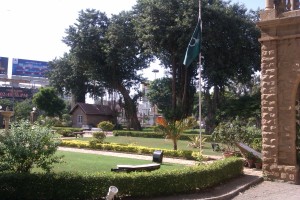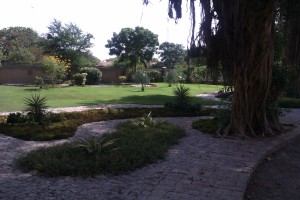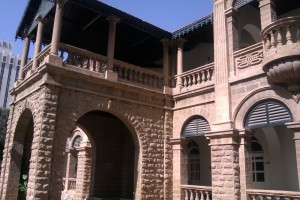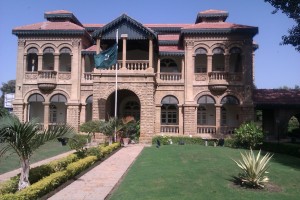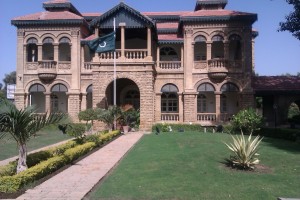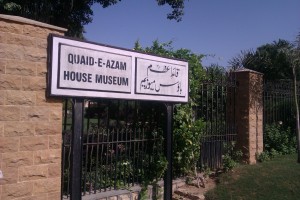While driving on Shahrah e Faisal, Karachi from Hotel Mehran towards Metropole there comes a building having old British era architecture covered with lush green lawns and trees. I used to look at this building almost every day as I knew this building belongs to Quaid E Azam & Mohtarma Fatima Jinnah. One day while coming from office on Saturday I turned my car towards it and stopped in front of this building. A white marble name plate on the face of main gate was showing name Quaid-e-Azam House Museum. Although Museum time was over but Museum Incharge was kind enough and showed me Quaid’s House from inside. Photography in not allowed inside the building however I took snaps from outside of building, which are here as follows
Please Click Pics to view in full size
Brief History of Quaid e Azam Museum Building
Flagstaff House Karachi
The Quaid-e-Azam House and Museum, earlier known as the Flagstaff House, is located on the Fatima Jinnah Road in Karachi, Sindh, Pakistan, and like almost all other houses on the road, was originally owned by a Parsi business tycoon.
Father of the Nation, Quaid-i-Azam Mohammad Ali Jinnah, purchased the house on the eve of Independence and later Madar-i-Millat Mohtarma Fatima Jinnah lived for many years here.
The building was designed by architect Moses Somake. This probably is Somake’s first known building which on one hand is modest and, on the other charming.
The bungalow, which was later designated as the Flagstaff House because of the residence of the General Officer Commanding, is situated at the most exclusive area of the Staff Lines. It is surprising that an architect little known at that time was asked to design this building.
The house was probably built in 1890. Somake had a habit of signing his buildings by inscribing his name in an obscure place that could be found with little effort. In the case of the Flagstaff House, it is etched on an inner face of the porch. Somake’s work on the Flagstaff House was confined to the main double storey bungalow, while the annex was added to the premises at a later date. Somake lavished his attention on the façade facing the Bonus Road, which was the main thoroughfare at the time, probably due to a tight budget.
The frontage has a symmetrical arrangement, with two wings flanking the central porch that carries the projecting part of the verandah. Simple arcading, carved pilasters and sloping roofs using red clay tiles are the architectural ingredients of this attractive bungalow. An unusual element is the introduction of semi-circular balconies, which also appear in the City Courts Building built at a later date. Finely chiselled and carved features embellish the front façade, while the rest of the building is in a hammer-dressed masonry.
Quaid-i-Azam visited the Flagstaff House in 1943, liked it and showed interest in acquiring it. Although owned by a Parsi business magnate Sohrab Kavasji, it had been requisitioned as the residence of General Hind, GOC.
The deed of purchase in the name of "Mr Mohammed Ali Jinnah, Barrister-at-Law, Bombay” was registered in March 1944. After the partition, the bungalow was furnished with the belongings and furnishings of the Quaid that had been brought from his Delhi and Bombay residences, and was kept in readiness, to be occupied by him, possibly after his retirement.
After the death of the Father of the Nation in 1948, Fatima Jinnah lived in the house from 1948 to 1964. Due to prime location several commercial organisations were interested in acquiring the property not for conservation but for demolition and constructing high buildings. Besides a number of public sector companies also tried to acquire the premises to erect a new building thereon.
The bungalow lay neglected till 1985 when, as a result of the pleas by the Heritage Foundation, it was acquired by the Government of Pakistan; restored and declared a national monument the Quaid-i-Azam House Museum. It now houses furniture, relics, and other items of the Father of the Nation. en.wikipedia.org/wiki/Quaid-e-Azam_House
